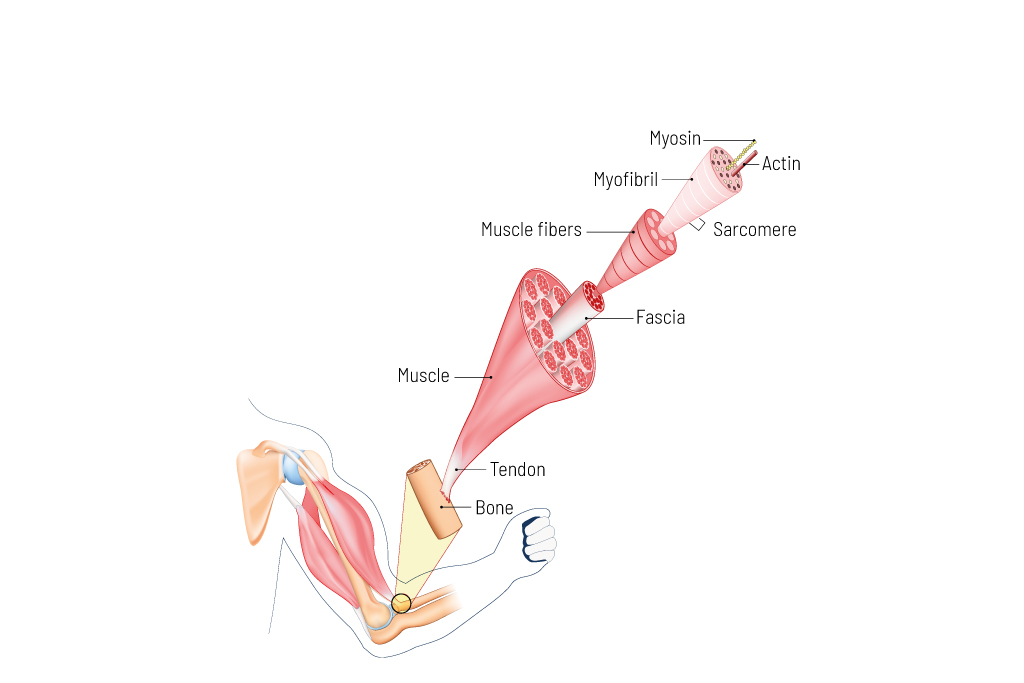Malignant hyperthermia (anesthesia complication) is a rare, but potentially life-threatening complication of anesthesia. It is triggered by some standard anesthetic medication. If a person seeking advice knows about their predisposition for malignant hyperthermia, the treating physician knows what safe anesthetic to use in the event of an operation.
Are you insured in Germany? Our colleagues at the Zentrum für Humangenetik Tübingen will gladly support you!
What Is Malignant Hyperthermia?
Malignant hyperthermia is a life-threatening complication during anesthesia. If respective genetic variants (changes) are present, the administration of certain standard anesthetics or muscle relaxants can lead to losing control over the calcium metabolism in the muscle.
Muscles are in charge of all movement sequences in the body. This includes not only our conscious movements but also, for example, the expansion of the lungs when breathing and the heart muscles.
Muscles are made up of bundles, that comprise several muscle fibers. These muscle fibers are made up of cells that can, depending on the desired motion, contract or expand (figure 1). If a signal for movement, a nerve impulse, arrives at a muscle, calcium is released. Calcium ensures that two filaments, actin, and myosin, slide into each other in the muscle cell, thereby leading to muscle contraction.
Figure 1: Structure of a skeletal muscle. The sarcomere is the smallest functional unit of a muscle. Each sarcomere mainly consists of the three proteins actin, myosin, and titin. During contraction, the sarcomere is shortened and during expansion, it is longer. The sarcomeres lie next to each other and thereby form a myofibril. Many myofibrils are bundled together and make up a muscle fiber.
For certain variants in the gene of the calcium receptor, the calcium release is permanently triggered through the used anesthetics. This leads to cramping of the musculature up to muscle rigidity and strong increase of blood pressure and body temperature. If the symptoms are not treated very fast, death may occur due to metabolic and organ failure.
Malignant hyperthermia is mostly only recognized if there is a life-threatening complication after the administration of narcotics or muscle relaxants during surgery. However, even a well-tolerated anesthesia does not rule out a predisposition to malignant hyperthermia, as patients have survived on average three anesthesia without problems before this complication occurs.
Field Report
Lucas C., 23 years old
Lifestyle: normal diet, exercise in everyday life
Result: it was found in the Prevention Panel that Lucas C. has a predisposition to malignant hyperthermia due to a variant in the RYR1 gene.
Consequence: Lucas C. now receives alternative narcotics during surgery to not trigger that life-threatening reaction.
“I wanted to have my DNA tested to get an overview of my health and my body. I was surprised to find out that I have a predisposition to this anesthetic complication, but of course I’m glad to know now. It’s great what you can find out with the latest technology.”
How Does Genetic Risk Assessment Work?
With the Prevention Panel in the module Malignant Hyperthermia, two genes are analyzed that are responsible for over 70% of all cases. Identifying a predisposition to this prior to anesthesia enables the attending physician to use an anesthetic that does not trigger that reaction.
You Are also Welcome to Take a Look at the Following Areas
Contact Us
Do you have a question, or are you interested in our service?
Diagnostic Support
We will assist you in selecting the diagnostic strategy – whether as a person seeking advice or as a physician.





